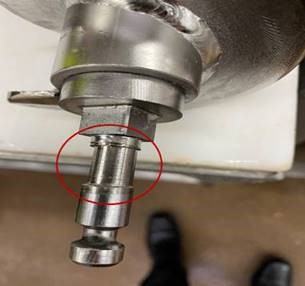It’s no accident that New Zealand’s food is trusted and recognised by consumers and governments the world over. Along with its excellent reputation for food quality, New Zealand food is known for its safety.
The food safety system makes this possible with its science and risk-based approach to protecting people from food borne illness. The system is a robust set of checks and balances which ensure that when issues arise, they are dealt with promptly and appropriately.
Food recalls are a key part of this system and our ability to effectively remove potentially harmful foods from the shelves is a good sign the food safety system is working well.
A food recall stops the sale, distribution, and consumption of food that is unsafe or unsuitable.

Food businesses are required to have a recall plan in place for when issues arise so they can act quickly and appropriately, especially if there is risk to public health.
A good example of the system in action happened last month when an Auckland food business recalled mince due to the risk of metal filings caused by equipment failure in the processing of this meat.
A recall is activated
It was only a matter of hours from the time the business contacted New Zealand Food Safety’s Food Compliance Services team saying they want to initiate a recall to getting the information onto the Ministry for Primary Industries website and out to their customers.
The Food Compliance team works with food businesses to provide guidance and oversight during a recall. The operator in this case notified the team about the potential need for a recall and Food Compliance Officer Annette Harrington was assigned to help facilitate the recall.
“I then became the point of contact between the business and our Food Compliance Services team..
When to initiate a recall
One of the primary duties of a food business is to make sure that the food is safe and suitable for consumers. If a food business identifies an issue with food that affects its safety or suitability, the recall plan should be initiated.
It’s important to understand the food safety risk, how it could affect people if they consume affected product, and how many people have potentially been exposed.
To guide food businesses in their assessment of the risk, operators are required to complete a risk analysis, which answers key questions about the issue, says Ms Harrington.
“It steps them through the risk analysis process. In this case, they were able to assess the risk from exposure to foreign matter in food.
“The metal was described as being very fine, that wouldn’t cause any choking risk. However, we couldn’t be certain of what size any bigger pieces of metal were.
To ensure that public health is always protected, a food business must err on the side of caution.
“The business acknowledged the mince was out in the marketplace and needed to inform customers not to eat affected products.”
They initiated the recall of all mince processed on that equipment.
Communicating to consumers
Most food recalls are voluntarily initiated by businesses when they become aware of a potential food safety or suitability issues. Retailers that sell the affected food are instructed to take it off their shelves.
The Auckland food business needed to recover the product from all points in the production and distribution network, including any affected product in the possession of consumers.
“I worked with the business to understand how they would best communicate the recall to their customers. We agreed on a point of sale notice, a message on their Facebook page as well as the recall notice on our website. I worked with their coordinator on the content of these communications.
“Consumers were advised the product should not be consumed and it should be returned for a refund. They were also advised if they have consumed any of this product and have any concerns about their health, to seek medical advice.
“The retailer displayed the point of sale notice that included a name of the affected products, affected best before dates, details of the issue, what to do with the affected product and health messages.”
A point of sale notice is up for typically four weeks to make customers aware of the issue and they can bring the affected food back.
In addition, a recall notice goes on the recall website page and the business is notified when this is published. An email is automatically sent to subscribers to this notification service with information on the recall including details about the business, product and issue.
If any affected products were sent overseas Food Compliance Services would also notify the affected marketplaces.
After the recall is underway, corrective action may be needed
A recall is the beginning of a longer process to ensure that the public will remain safe.
“The next part of recall process involves me asking questions of the business. They complete a recall audit form giving details on the corrective actions they have taken.
“I assess the information and work out if other corrective actions need to be taken.
In this case, corrective actions were required. The business needed to confirm that the machine will be fixed and will undergo more regular checks.
Food recalls are a good thing
“I personally see food recall as a positive thing. If there is an issue and a risk; products need to be recalled. This needs to be communicated to customers quickly. If it’s at home, they can dispose of it themselves. It reduces the risk of someone getting harmed or ill from consuming that product.
“The recall system is a line of defence for consumers and provides an opportunity for businesses to improve on their systems so the issue won’t happen again.”
New Zealand Food Safety is a business unit of the Ministry for Primary Industries. Find out more about recalls on our website at: https://www.mpi.govt.nz/food-safety/food-recalls/



